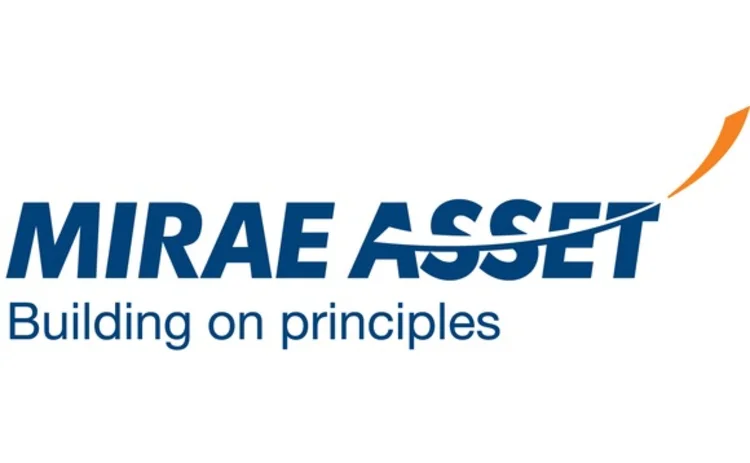
Sponsored statement: Mirae Asset Global Investments

Emerging markets in Asia offer a timely opportunity to invest with lower risk than in previous years, according to Roger Liu, director and head of exchange-traded funds (ETFs) at Mirae Asset Global Investments.
“Investors are increasingly looking at the rapidly maturing emerging markets in Asia for growth. Just a decade ago, Asia was still a part of a risky global emerging market class, but now Asia is an asset class of its own and is an important driving engine for the global economy,” says Liu.
Sector-based ETFs provide access to a range of companies within a particular industry that are set for growth. They provide all the benefits associated with ETFs, such as real-time trading, low tracking error and trading in the Asian time zone, with the added benefit of exposure to fast-growing industries in Asia.
Mirae Asset recently launched the first range of sector-specific ETFs in Hong Kong to facilitate this opportunity, including the Mirae Asset TIGER Standard & Poor’s (S&P) Emerging Asia Consumer (3054 HK), Asia ex-Japan, Australia and New Zealand (JANZ) Energy ETF (3076 HK), Asia ex-JANZ Materials ETF (3078 HK), Asia ex-JANZ Industrials ETF (3075 HK), Asia ex-JANZ Financials ETF (3064 HK), Asia ex-JANZ IT ETF (3066 HK), and Global Consumer Brands ETF (3056 HK).
“With these ETFs, there is no need to open a brokerage account in 10 markets with 10 different currencies,” says Liu.
Rotate for profit
For institutional and retail investors, it is now simple to execute dynamic sector-rotation strategies and take advantage of a lag or uptick in a particular sector depending on the business cycle, calendar year and geographical trends.
“The S&P broke even last year but, using a sector momentum ETF strategy, you can break down the S&P into 10 sectors. Only two sectors were negative – financials and IT. The other eight sectors were positive, so buying the broad market breaks even but selecting carefully achieves an optimum performance,” says Liu.
“ETF investors can take advantage of their research, for example, by picking the best-performing sector from the last three months and then shorting the worst performer from the last three months long/short 50:50, or a different bias such as 70:30. These ETFs are especially effective when used as a package for asset allocation.”
He adds that one interesting sector strategy is to invest in the IT ETF, which provides exposure to Asian IT companies, 49.26% of which make components for Apple. So, instead of investing directly in Apple and directly in Asian IT consumer stocks, one ETF provides a diversified exposure to both stories. Since its launch on March 19, the IT ETF is up 16.58%.
Buying power
A further opportunity for investors might be the rise of the Asian consumer, as India and China prepare to move from export-oriented economies to consumer-driven economies. “Before 2007, the Chinese consumer was saving and exporting but, this year, the national policy is to spend more domestically. The timing is perfect to take advantage of the era of the Asia consumer,” says Liu.
Safe hands
For a stock to be included in Mirae Asset’s two consumer-related ETFs, each company must have experienced positive earnings growth in the past year. “Comparing our product to Morgan Stanley Capital International (MSCI) consumer indexes, we outperform. We make sure that companies’ earnings are growing. Many come from India and China, but they include 10 countries from Indonesia through to Korea,” says Liu.
Mirae Asset Global Investments has become a regional-global powerhouse, following the acquisition of Canada-based Horizons ETF. The combined company has 160 ETFs globally on four different exchanges across the world, making it the only ETF provider to combine knowledge from the East and West.
Click here to view the article in PDF format.
Sponsored content
Copyright Infopro Digital Limited. All rights reserved.
As outlined in our terms and conditions, https://www.infopro-digital.com/terms-and-conditions/subscriptions/ (point 2.4), printing is limited to a single copy.
If you would like to purchase additional rights please email info@risk.net
Copyright Infopro Digital Limited. All rights reserved.
You may share this content using our article tools. As outlined in our terms and conditions, https://www.infopro-digital.com/terms-and-conditions/subscriptions/ (clause 2.4), an Authorised User may only make one copy of the materials for their own personal use. You must also comply with the restrictions in clause 2.5.
If you would like to purchase additional rights please email info@risk.net